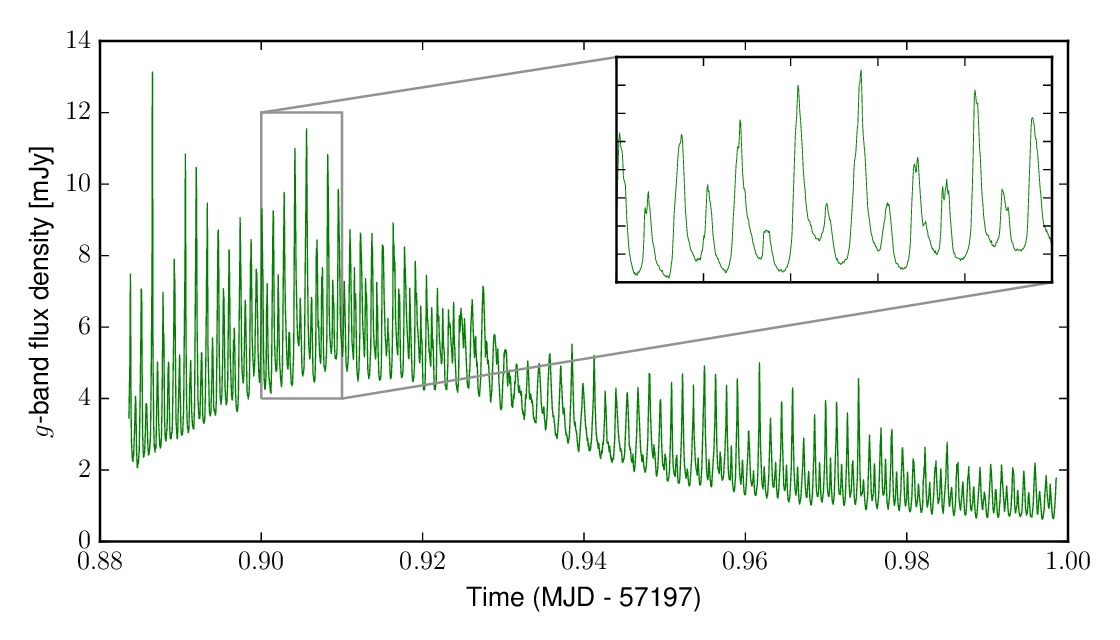High-speed astrophysics
Compact objects - white dwarfs, neutron stars and black-holes - are a key research area of the Warwick astrophysics group. These objects underly many of the most spectacular phenomena in the Universe, namely supernovae, gamma-ray bursts and the recently-discovered gravitational waves from a merging pair of black-holes. There are major unsolved problems with all objects classes. White dwarfs underly Type Ia supernovae, bu texactly how is a key unsolved problem in astrophysics. Black-holes when accreting are the source of powerful relativistic jets, but just how they are produced is unclear. Compact stellar remnants are small, leading to short time-scale variations. At Warwick we have lead high-speed observations of these objects for over a decade, through a high-speed camera called ULTRACAM, more recently with another high-speed camera ULTRASPEC, and in the near future with the successor to ULTRACAM, called HiPERCAM, due to be commissioned in Autumn 2017. HiPERCAM is a 5-channel high-speed CCD camera that will allow us to observe simultaneously across the Sloan (SDSS) ugriz pass-bands enabling spectacular insight into compact object accretion processes.
There are many opportunities for PhD research in this area, which provides a superb training ground in observational astrophysics. The major upcoming opportunity, that will be the focus of all work in this area for years to come, is the Gaia survey. Early 2018 will see the second and major data realease of Gaia data, positions, parallaxes and magnitudes of a billion stars. This will allow identification of vast new classes of stars, generating a need for follow-up which ULTRACAM, based on the New Technology Telescope (NTT) in Chile, and HiPERCAM sited in the Canary Islands, are ideally suited. Specifically a PhD in this area will involve: (1) selection from Gaia of white dwarfs (of order 200,000 are expected), (2) cross-matching with ground-based variability and multi-colour surveys to identify candidates for intensive follow-up, (3) observations and analysis using high-speed optical cameras.
Supervisor: Tom Marsh
A recent example of the sort of work involved is a system called AR Sco. The nature of this system was a mystery until we observed it using ULTRACAM on the 4.2m William Herschel Telescope in La Palma in the Canary Islands. The light curve of this star turned out to be truly spectacular (see below). This object can brighten by a factor 6 in 30 seconds! We believe this is the first example of a white dwarf pulsar. For more on this see the discovery paper in Nature and a follow-up discovery of extremely unusual high polarisation. Features of this work, such as spectroscopic follow-up on a wide range of facilities and international collaboration, are an absolutely essential part of the work involved.

Figure: The optical brightness of the system AR Sco, observed over a duration of 2.5 hours with the high-speed camera ULTRACAM in the g-band SDSS filter. The strong pulses, which recurr on a basic period of 2 minutes, are due to the spin of a rotating, magnetised white dwarf which drives radiation over the entire electromagnetic spectrum.
